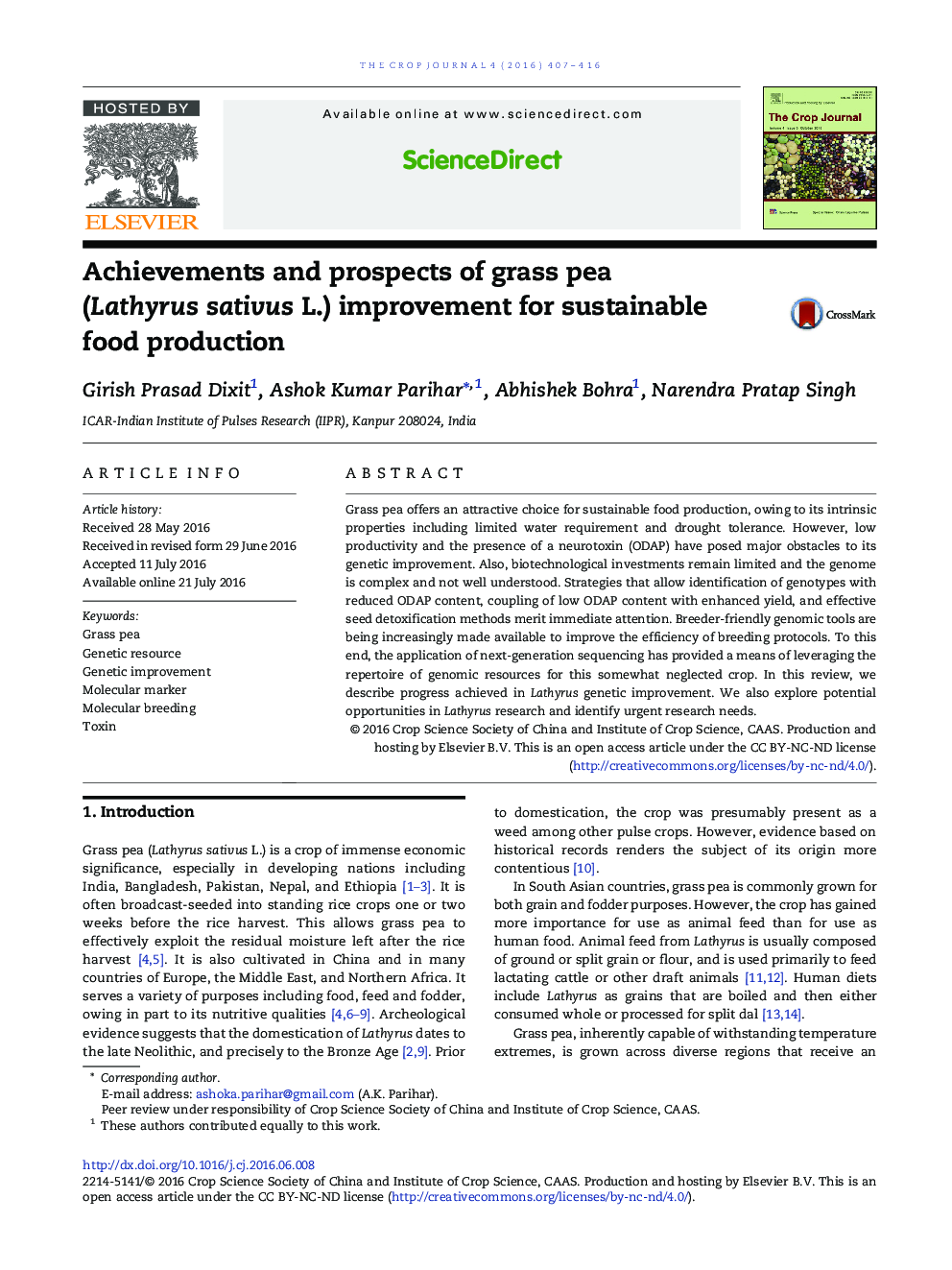| Article ID | Journal | Published Year | Pages | File Type |
|---|---|---|---|---|
| 5520805 | The Crop Journal | 2016 | 10 Pages |
Grass pea offers an attractive choice for sustainable food production, owing to its intrinsic properties including limited water requirement and drought tolerance. However, low productivity and the presence of a neurotoxin (ODAP) have posed major obstacles to its genetic improvement. Also, biotechnological investments remain limited and the genome is complex and not well understood. Strategies that allow identification of genotypes with reduced ODAP content, coupling of low ODAP content with enhanced yield, and effective seed detoxification methods merit immediate attention. Breeder-friendly genomic tools are being increasingly made available to improve the efficiency of breeding protocols. To this end, the application of next-generation sequencing has provided a means of leveraging the repertoire of genomic resources for this somewhat neglected crop. In this review, we describe progress achieved in Lathyrus genetic improvement. We also explore potential opportunities in Lathyrus research and identify urgent research needs.
